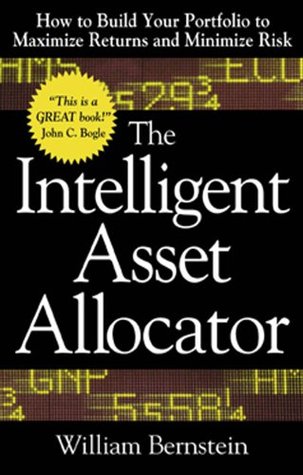More on this book
Kindle Notes & Highlights
Read between
December 19 - December 31, 2018
Vanguard Tax-Managed Growth and ...
This highlight has been truncated due to consecutive passage length restrictions.
This tax-managed version of the 500 Index Fund seeks to minimize distributions by selling high-basis-cost shares first and selling other po...
This highlight has been truncated due to consecutive passage length restrictions.
Vanguard Total Stock Market Index Fund.
As it owns “the whole market,” it sells a stock only if the company is bought out for cash.
Vanguard Value Index Fund.
bottom 50% of market capitalization of the S&P 500 when sorted by price/book ratio.
not suitable for taxable accounts.
Vanguard Small-Cap Index Fund.
Vanguard Tax-Managed Small-Cap Fund.
Vanguard Small-Cap Value Index Fund.
Vanguard European and Pacific Stock Index Funds.
Vanguard Emerging Markets Stock Index Fund.
uncertain how much in distributions the fund will yield in the long term,
Vanguard Total International Stock Index Fund.
This is the one for those of you who prize portfolio simplicity. It is suitable for taxable accounts.
Vanguard REIT Index Fund.
Vanguard lacks international small-cap and international value vehicles.
DFA funds are available through an approved financial advisor,
Acorn International and Tweedy Browne Global Value funds
only problem is that they’re really not small-cap funds.
the real reason why those two funds have performed so well is that they are, in fact, medium to large—and not small—foreign funds.
believe that, in the long run, growth investing is a bad idea,
In any case, the S&P 500 and small-cap indexes, being capitalization weighted, are for all practical purposes growth proxies.
A new development in the world of indexing are so-called exchange-traded funds (ETFs).
Also, ETFs reinvest dividends only quarterly, and thus will suffer a slight performance drag relative to a conventional fund, which continuously reinvests its dividends. On the whole, unless you are an active trader, ETFs hold no real advantage over a conventional index fund.
Although WEBS offer certain theoretical advantages over the Vanguard and DFA foreign index funds relating to portfolio rebalancing, in practice these potential advantages are outweighed by their expense disadvantage.
The coming years will see an explosion in the asset-class varieties offered by ETFs that may in the long run prove a boon to the passive asset-class-based investor.
Presently, European and Japanese government bond yields are actually lower than available from the U.S. Treasury, and it hardly seems wise to pay 12%–20% of the average coupon in expenses for these funds.
Vanguard’s short-term and intermediate-term offerings.
Of critical importance to your allocation is the relative amount of tax-sheltered versus taxable assets.
The traditional way of reaching a fully invested position is by dollar cost averaging (DCA). It involves investing the same amount regularly in a given fund or stock, illustrated as follows.
Security prices do not get to bargain levels without a great deal of negative sentiment and publicity.
On the other hand, the real risk of DCA is that your entire buy-in period may occur during a powerful bull market, which may be immediately followed by a prolonged drop in prices.
value averaging, (VA),
Instead of blindly adding, say, $100 per month, one draws a “value-averaging path,” consisting of a target amount, which increases by $100 per month.
If the fund value-declines, then more than $100 will be required; if the fund goes up, then less will be required. It is even possible that if the fund value goes up a great deal, no money at all will have to be added in some months.
As already pointed out, if there is a global bear market, you will run out of bond reserves long before 36 months are up.
This means that we will wind up with more than our 20% allotment of bonds in the IRA and less than 20% in the Limited-Term Tax-Exempt Fund, but this is a relatively minor imperfection.
First and foremost, the investor is investing at both market lows and market highs;
VA is very similar to DCA, with one important difference: It mandates investing larger amounts of money at market bottoms than at market tops, increasing returns even further.
DCA and rebalancing.
I’d recommend a minimum of two to three years for funding, however;
Recall that the major effect of rebalancing on return is the rebalancing bonus, the excess return obtained from buying low and selling high that rebalancing forces.
Rebalancing can be regarded as the only consistently effective method of market timing.
The answer is complex but basically hinges around finding the interval for which the aggregate correlation among portfolio assets is lowes...
This highlight has been truncated due to consecutive passage length restrictions.
The interval with the lowest correlations and/or the highest variances is the optimal rebalancing period.
long rebalancing intervals are preferred.
momentum phenomenon
In other words, above- or below-average asset-class performance has a tendency to persist, and it is best to let such behavior run its course for a while before rebalancing.
If you rebalance every year or two, you probably won’t go too far wrong.


